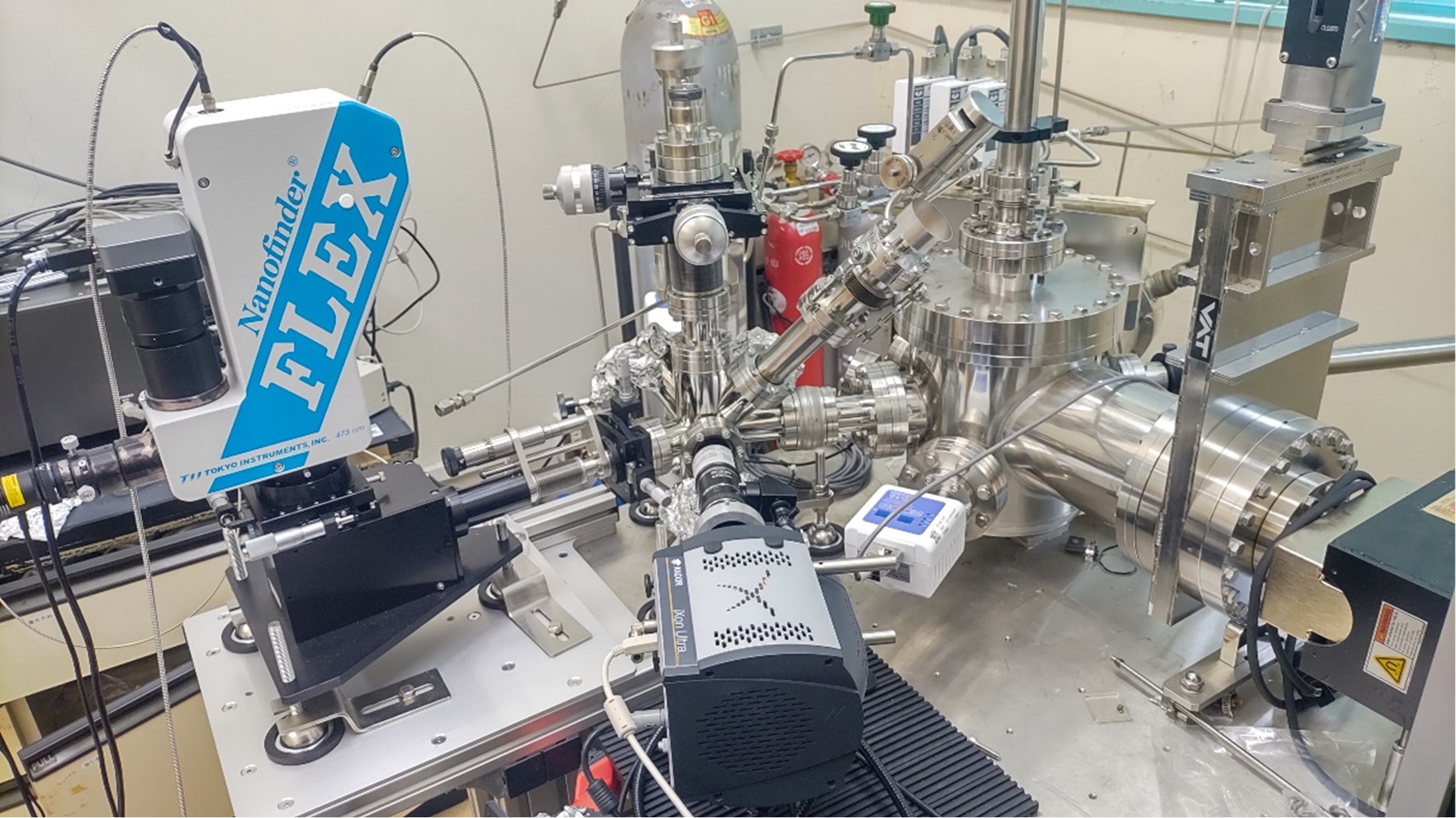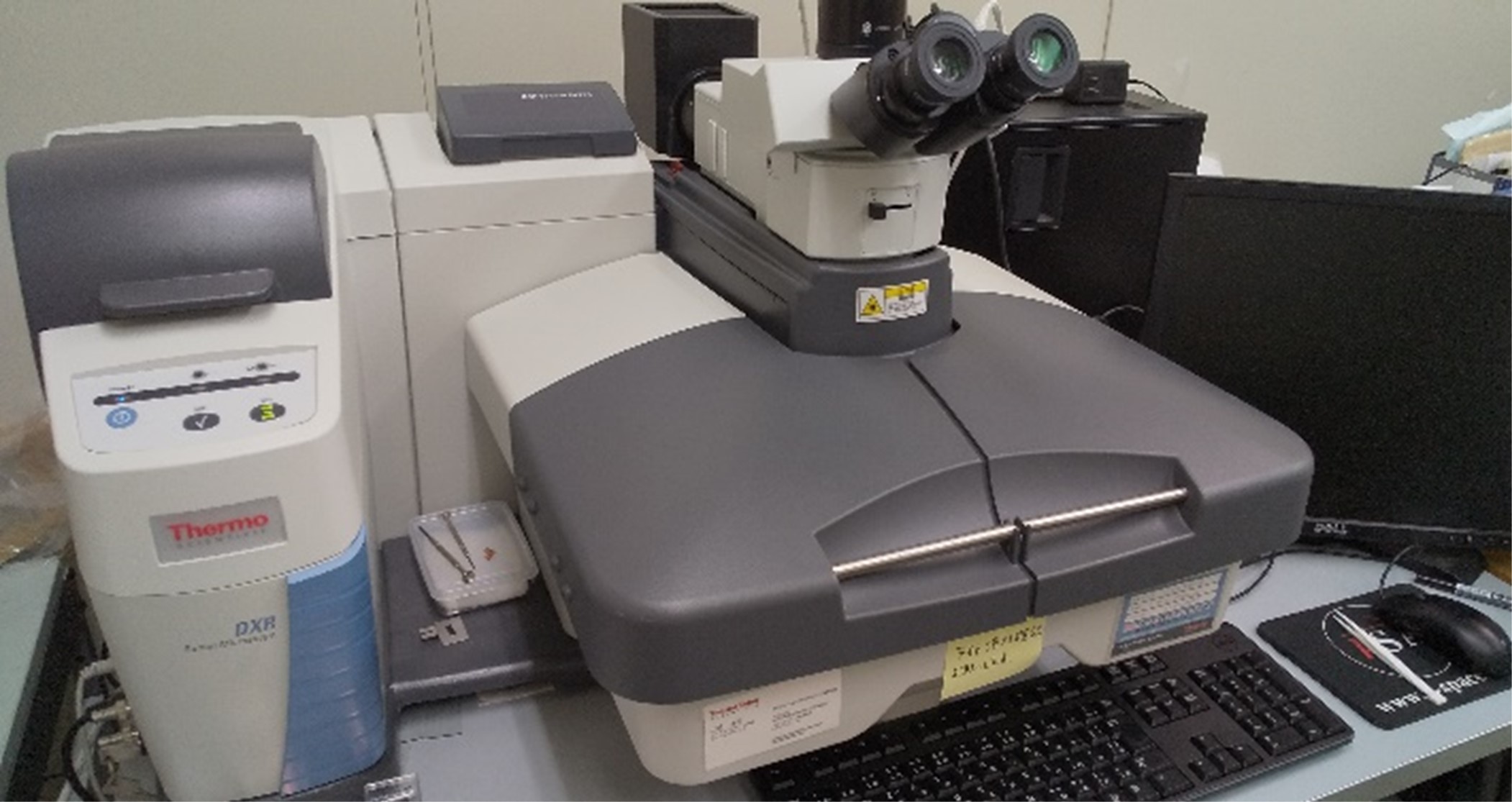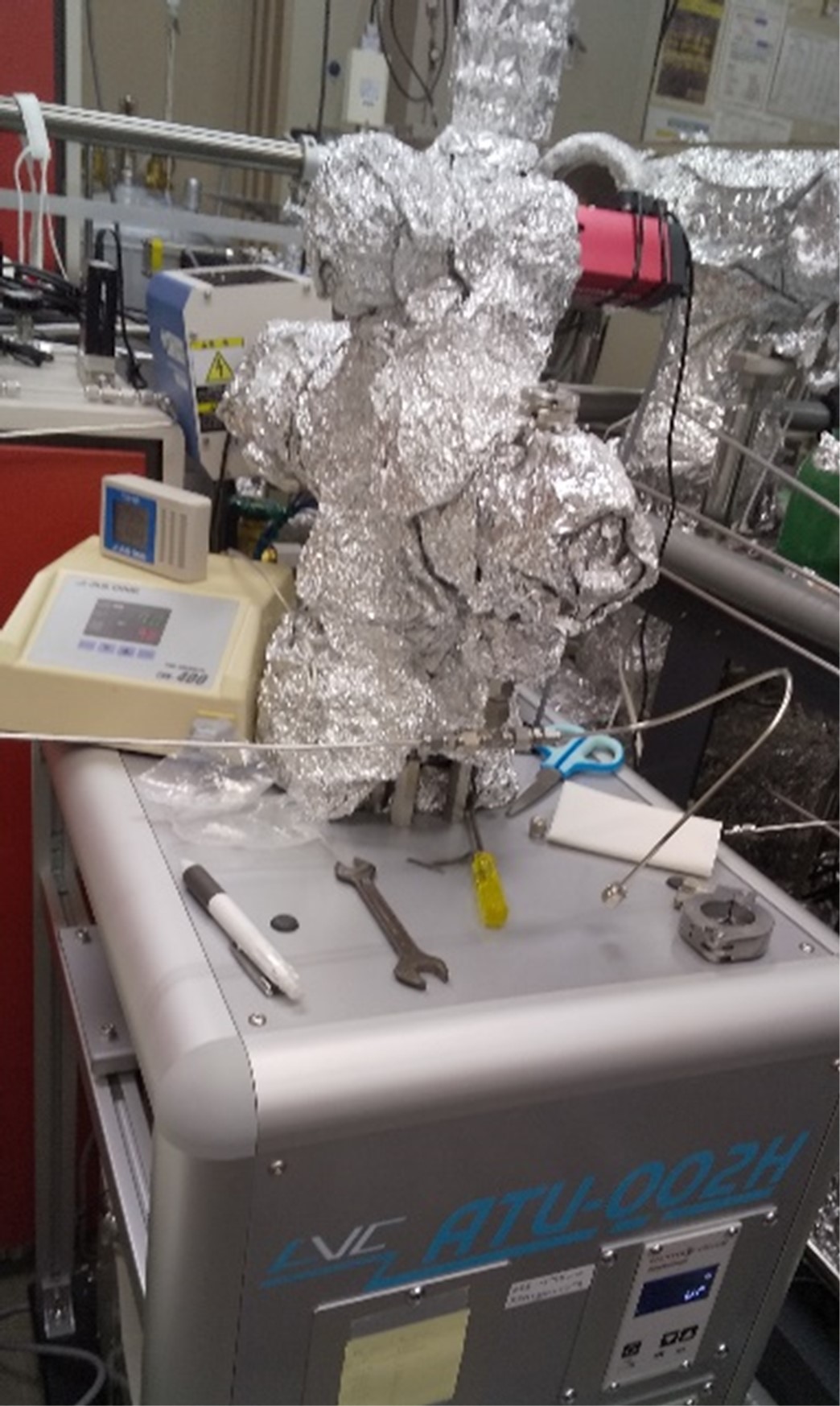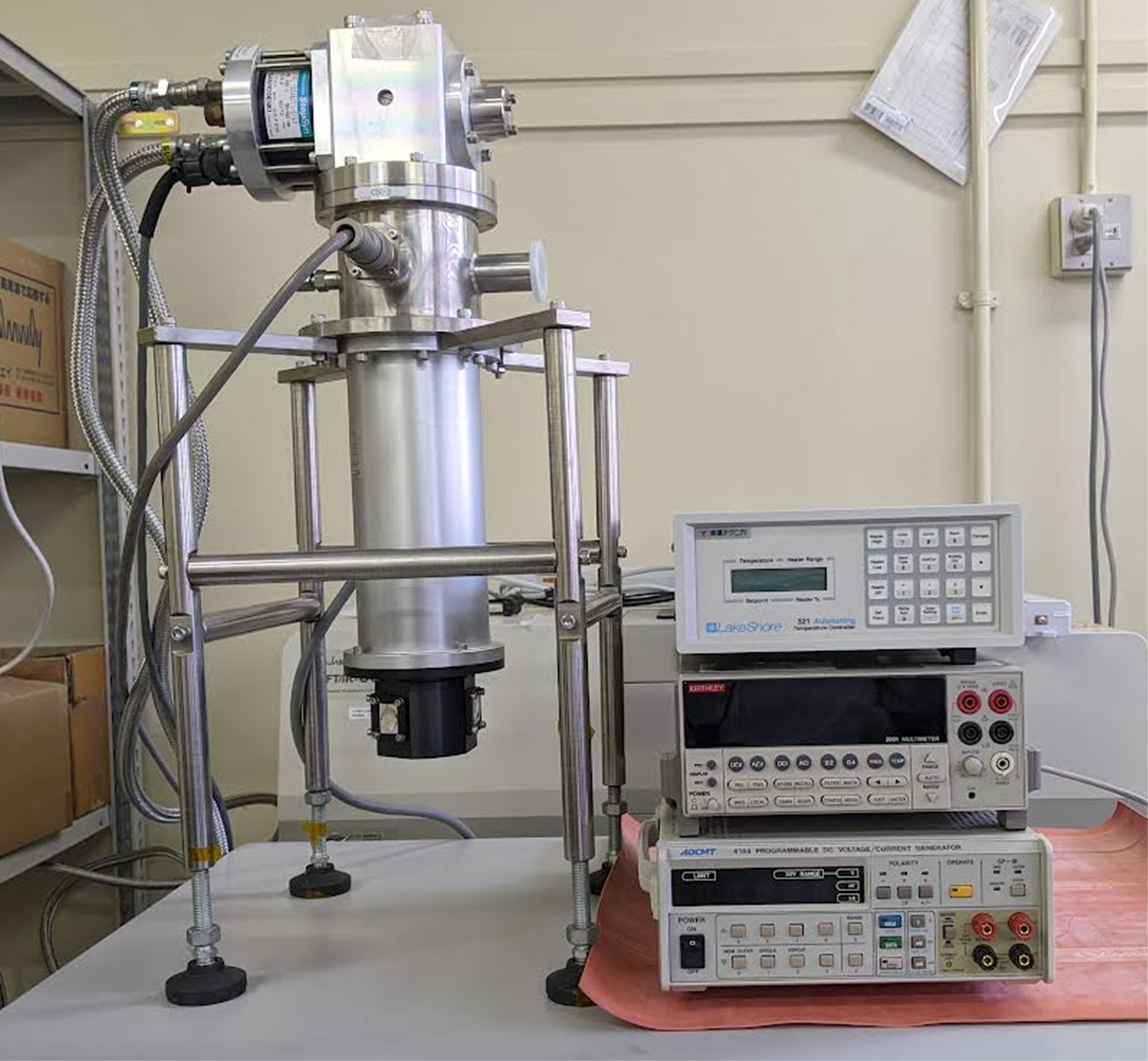Scanning Tunneling Microscope(STM)
This enables atomic level observation of surface structures using tunnel current between the probe tip and the sample. It is equipped with ion gun, deposition sources and heating system for sample preparation, and low energy electron diffraction (LEED) for observing reciprocal lattice patterns.
Atomic Force Microscope (AFM)
AFM is a device that detects the atomic force acting between the tip and the sample to image the surface topography of the sample. The applicable measurement modes of the AFM are contact mode, lateral force microscopy (LFM), dynamic mode (tapping mode), phase mode, and force curve measurement.
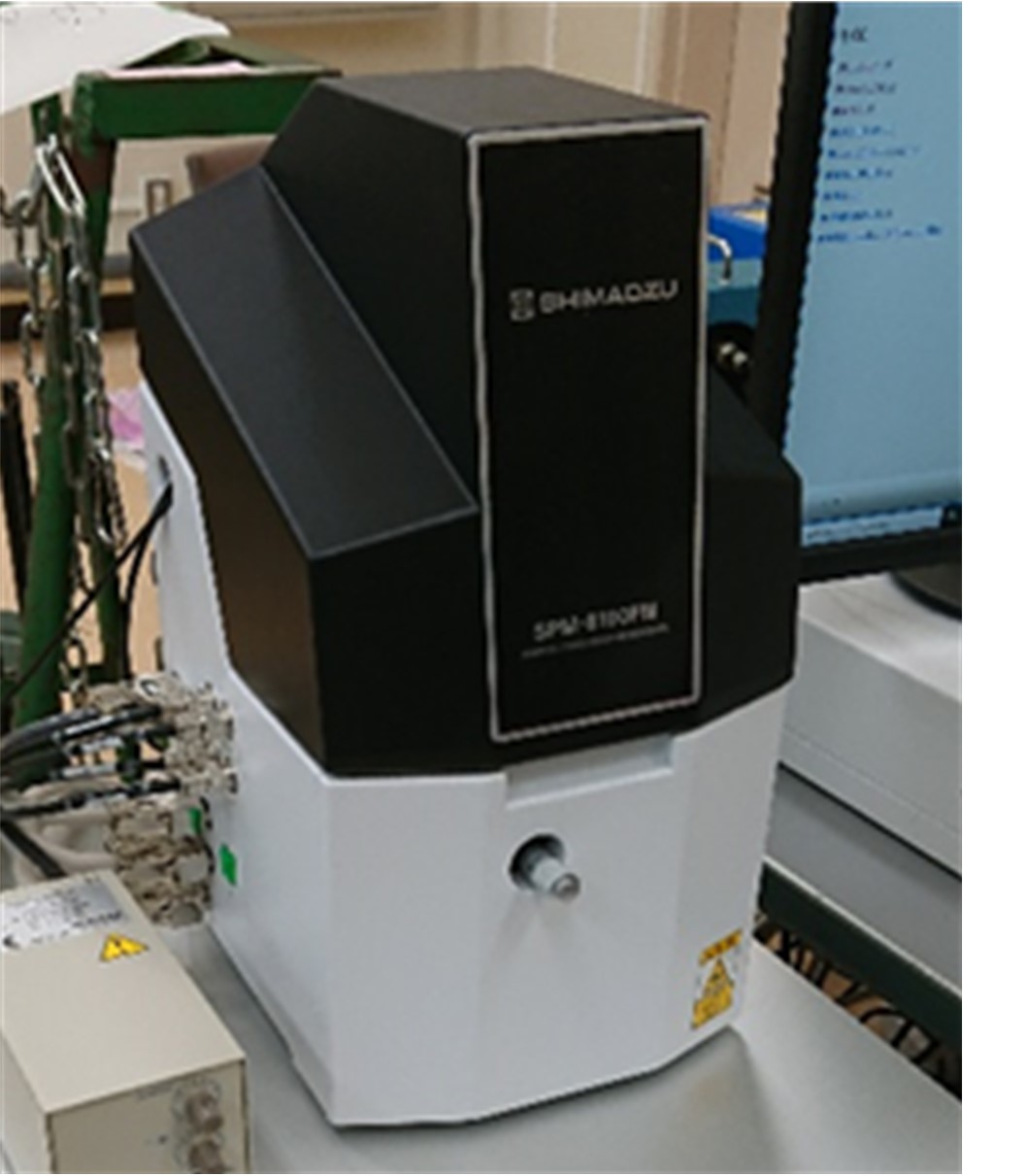
AFM

AFM image
Step-terrace structure of Ge surface
Radiation-mode optical microscope (Rad-OM)
An apparatus for in-situ observation of crystal growth of graphene by imaging of thermal radiation contrast in a gas atmosphere at 1000 ℃. It also has an ion gun for surface cleaning and a Raman scattering spectroscopy unit.
Reflection High Energy Electron Diffraction (RHEED)
RHEED is one of surface structure analysis techniques, which shows the diffraction pattern derived from surface structure using high energy electron beam. This method can be used at the same time as the vapor deposition equipment and so on, because the electron incidence and electron diffraction are very small angle relative to the sample surface.
Gas chromatograph with dielectric barrier discharge ionization (BID) detector (Shimadzu, Nexis GC-2030)
A produced gas or liquid can be quantitatively analyzed at high sensitivity.
Micro-Raman spectrophotometer equipped with a 532 nm laser excitation source (DXRTM, Thermo Fisher Scientific))
Raman spectra of materials can be analyzed.
Quadrupole mass spectrometer (Canon Anelva, M-201QA-TDM)
Mass and isotopic ratios of a produced gas can be analyzed.
Bi-Potentiostat / Galvanostat (HZ7000, Hokuto denko Co.)
Electrochemical property of electrocatalysts can be analyzed.
Resistivity measurement system
Four-terminal sensing method
Temperature range: 10-300 K (cryogen free)
µSR Spectrometer (J-PARC D1)
Local state of magnetism, superconductivity, hydrogen state etc are investigated by muon spin relaxation/rotation technique. Low-temperature experiment down to 0.1K is performed.



